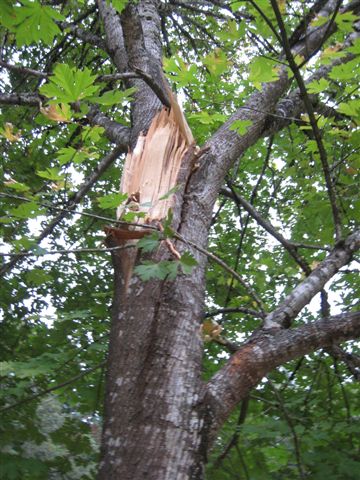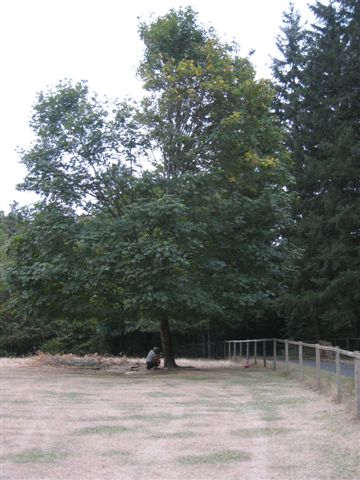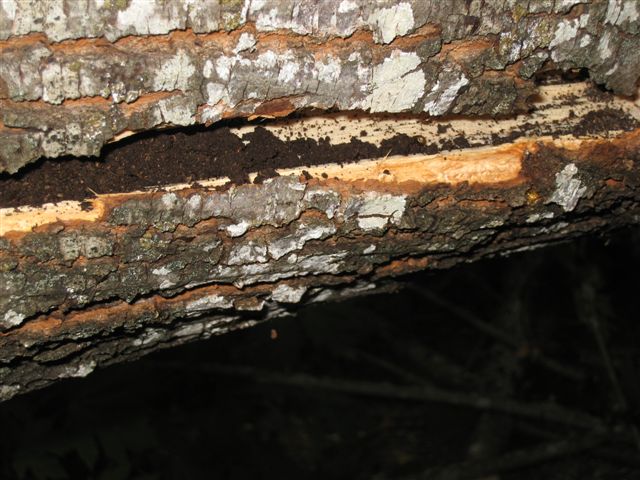Pasture Perils
By Melinda Van Bossuyt
Sometimes you get used to things the way they are. This can be the case in one’s own barnyard and pasture. Familiarity may blind us to problems and hazards right under our noses. This happened to us recently. Perhaps my story will help some of you prevent a possible catastrophe, as we did.
We returned home from a five week vacation with our pack llamas in the Sierras to find that a very large maple tree in our lower baby pasture had dropped a huge limb. Our caretaker informed us it had happened about a week before, during the first part of September. There was no wind, no rain, and no apparent catalyst for such an occurrence. Luckily, no llamas were injured or killed. The shade of that tree was a favorite hangout for generations of llama mothers and babies.

A fallen limb broke away at this point 12 feet up in our 40 year old maple tree. The split extends on down the trunk for several feet.
Dave set to cutting up the fallen limb with his chainsaw the first weekend we were home. I came out to help load all the fire wood into the truck to move it to a new firewood stack we set up down along the driveway. I looked up and pointed out that there was a large crack through which I could see light in the remaining part of the tree. This provoked Dave, a forester and arborist, to examine the tree more carefully. By the time we finished loading the firewood, Dave concluded that, sadly, the rest of the tree must come down. Clearly there was risk of more limbs splitting off or even most of the tree falling toward the fence and driveway. The threat to llamas, humans, and even cars was great enough that he set to the job later that very afternoon.

Dave cuts down the hazardous maple tree. The broken limb left the large gap in the top of the tree. The remaining portion of the tree threatened the fence and driveway as well as lounging llamas.
I brought the camera to commemorate the event. Dave, an experienced faller, made his cuts and brought the tree crashing down to exactly the place he intended. We examined the trunk and discovered the crack in the tree extended quite a distance down the tree. The crack had been there long enough to develop soil and roots. We were both surprised and impressed. Cutting the tree down was certainly justified.

Dark area inside crack is fully developed soil., created over time by old leaves and other debris. There were even worms!
This got us to looking at other trees in our pastures. With winter on the way, we want to minimize the risk to llamas and fences. A dead cherry tree in the middle pasture will get the axe next.
BACK - HOME
|
Packing, Articles, and Photos
|
|
Welcome to the very bottom of the page! All material on this site, including but not limited to, text, images, and site layout and design, is copyright. Copyright © 1983-2012, Spring Creek Llama Ranch. All rights reserved. Nothing may be reproduced in part or full from this site without explicit written permission from Spring Creek Llama Ranch. All website related questions can be directed to the webmaster or webmistress. Questions about llamas, services, or other such things, can be directed to Spring Creek Llama Ranch.
